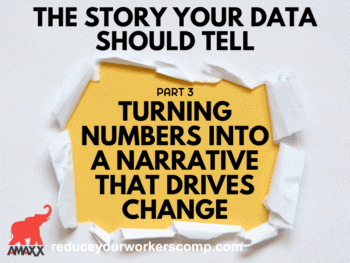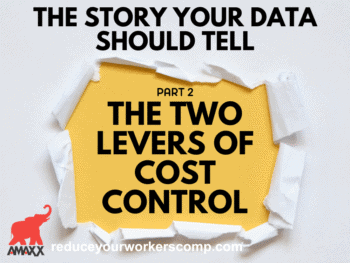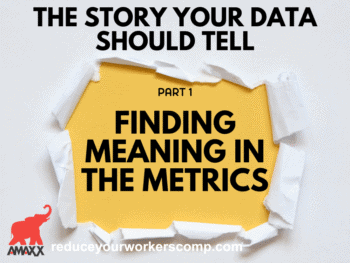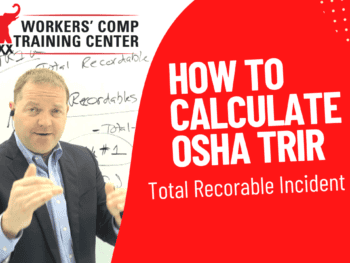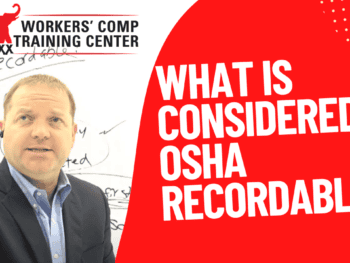Benchmarking is the process of either comparing your company’s results with the results of similar companies in your industry or comparing your own results for a current period of time with a prior time period of the same duration. Loss runs are a compilation of computer data that outlines the details and results of your workers compensation claims over a set period of time. Loss runs can be produced at any time on the more modern claim information management systems, but most risk managers will opt for them to be produced at the end of the last day of the month.
The loss runs from your claims risk information management system (RMIS) can provide you with both financial data and non-financial information to establish benchmarks. Some of the financial information that can be captured includes:
- Average cost per claim for your medical only claims.
- Average cost per claim for medical benefits on indemnity claims.
- Average cost per claim for indemnity benefits.
- Average cost per claim for legal expenses.
- Average cost per claim for medical case management.
- Average cost per claim for vocational rehabilitation.
- Average cost per claim for independent adjuster expense.
- Average cost per claim for all other expenses.
- Total cost for all medical only claims.
- Total cost for all claims with indemnity benefits .
Click Link to Access Free PDF Download
As important as the financial information is to the management of your workers compensation program, some of the non-financial data (which often has an impact on the financial data) can be just as important. The claims information management system can also be set up to include on the loss run non-financial information like:
- Average number of days from date of injury to the date of notification to the employer.
- Average number of days from employer notification to claims office notification.
- Average number of days from the claims office notification to the completion of three-point contact (employee, employer, medical provider).
- Average number of days from the date of injury to the first indemnity payment.
- Average number of days from the claim office notification of the claim to the first indemnity payment.
- Average number of days medical only claims are open.
- Average number of days indemnity claims are open.
- Average number of medical payments on the medical only claims.
- Average number of medical payments on the indemnity claims.
- The ratio of medical only claims to indemnity claims.
- Average number of workdays lost per claim.
- Total number of employees out of work (OOW). This is critical as lost days drive indemnity dollars, medical dollars and expenses, so know the number of employees OOW.
There are various other types of benchmarks, both financial and non-financial that can be tracked using the loss runs produced by your claims information management system. We do not recommend that you try to track every benchmarking option that your claims information management system can produce. (If you do, you will not have much time for anything else!) From a feasibility standpoint, we recommend that you select five to 10 benchmarks that you feel are the most important to the success of your claims program.
The benchmarking options we would suggest would include:
- Average cost of medical only claims.
- Average cost of indemnity claims.
- Average number of work days lost per indemnity claim.
- The ratio of medical only claims to indemnity claims.
- Add any other area where you feel improvement is needed in your claims program.
These benchmarks will give you insight into the big picture, allowing you to take the appropriate steps to manage and improve the overall results of your workers compensation program. open-ended
Many risk managers will take whatever information is available on their loss runs and use that information to set their benchmarks. We recommend a different approach. We would suggest you first determine what information is important to the optimum performance of your risk management program and/or your claims management program. Once you have established the information you need, contact the IT department and ask them to revamp the loss runs to produce the information you want. While you are at it, determine the frequency you want the information produced. (We recommend monthly, as daily and weekly frames are often too short to produce viable trends and quarterly and yearly is too long of a time frame to not act on important information or trends).
FREE DOWNLOAD: “5 Critical Metrics To Measure Workers’ Comp Success”
By synchronizing your benchmarks objectives with your loss runs, you will be able to see where your claims program is improving and where the trends are negative and improvement is needed. Proper benchmarking with the loss runs that provide the data you need, but not too much excess data, will result in both better claims performance and improved financial results.
Author Rebecca Shafer, JD, President of Amaxx Risks Solutions, Inc. is a national expert in the field of workers compensation. She is a writer, speaker, and website publisher. Her expertise is working with employers to reduce workers compensation costs, and her clients include airlines, healthcare, printing/publishing, pharmaceuticals, retail, hospitality, and manufacturing. See www.LowerWC.com for more information. Contact:RShafer@ReduceYourWorkersComp.com.
WORK COMP CALCULATOR: http://www.LowerWC.com/calculator.php
MODIFIED DUTY CALCULATOR: http://www.LowerWC.com/transitional-duty-cost-calculator.php
WC GROUP: http://www.linkedin.com/groups?homeNewMember=&gid=1922050/
SUBSCRIBE: Workers Comp Resource Center Newsletter
Do not use this information without independent verification. All state laws vary. You should consult with your insurance broker or agent about workers comp issues.
©2011 Amaxx Risk Solutions, Inc. All rights reserved under International Copyright Law. If you would like permission to reprint this material, contact Info@ReduceYourWorkersComp.com.
FREE DOWNLOAD: “5 Critical Metrics To Measure Workers’ Comp Success”


